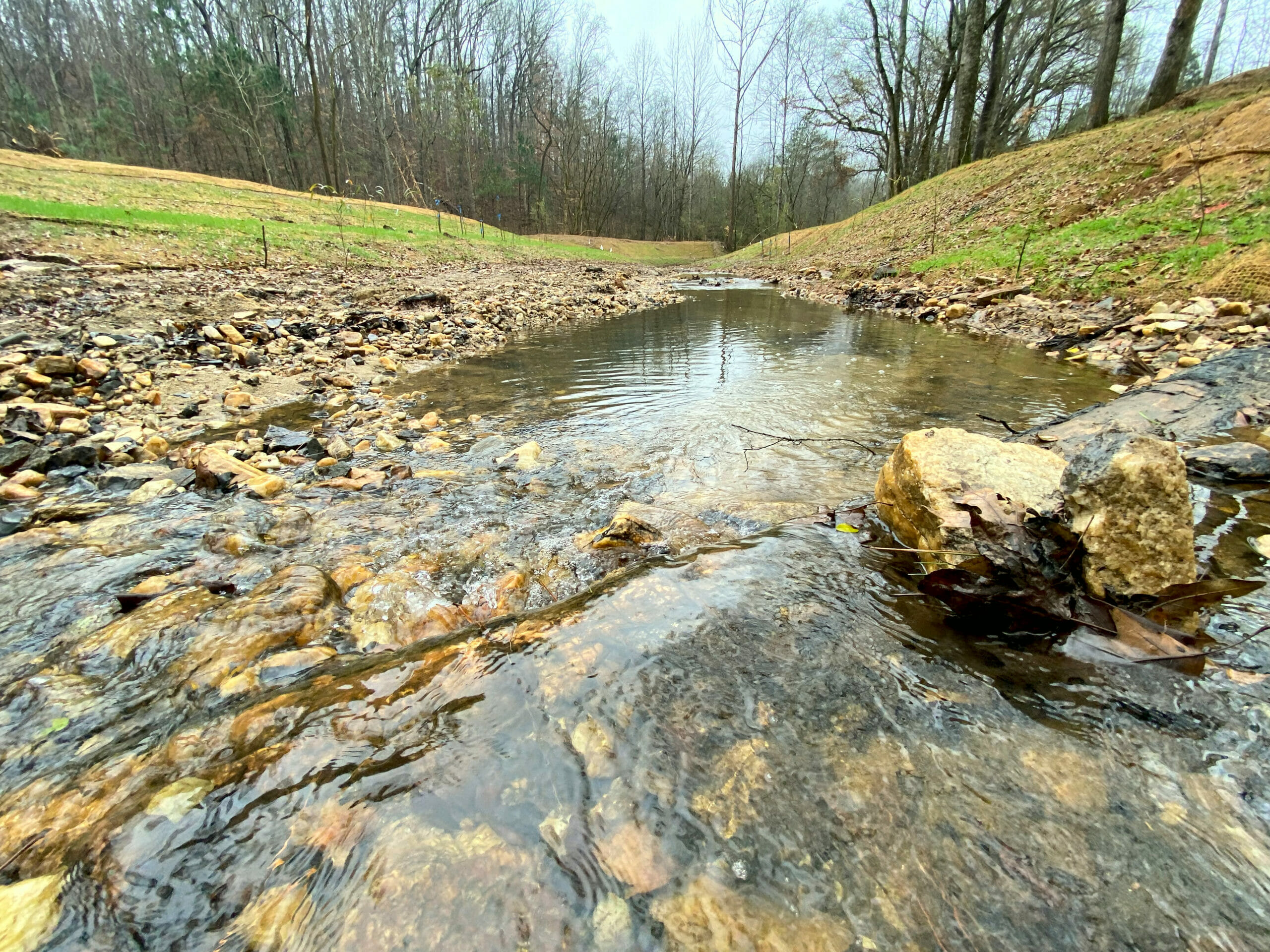Many Trout Unlimited chapters have used Embrace-A-Stream grants as seed money for projects. A group of TU volunteers in the Southeast took that approach to a different level with an effort to benefit the famed Chattahoochee tailwater near Atlanta, turning a $7,500 Embrace-A-Stream grant into a quarter-million-dollar project and energized the local conservation community.
The effort started, appropriately enough, with the Upper Chattahoochee and Oconee River chapters. When members started looking for a worthy project, they considered something in their traditional work area in the mountains of North Georgia. As more discussions occurred, they quickly realized that there was work to be done closer to home to enhance wild brown trout habitat.
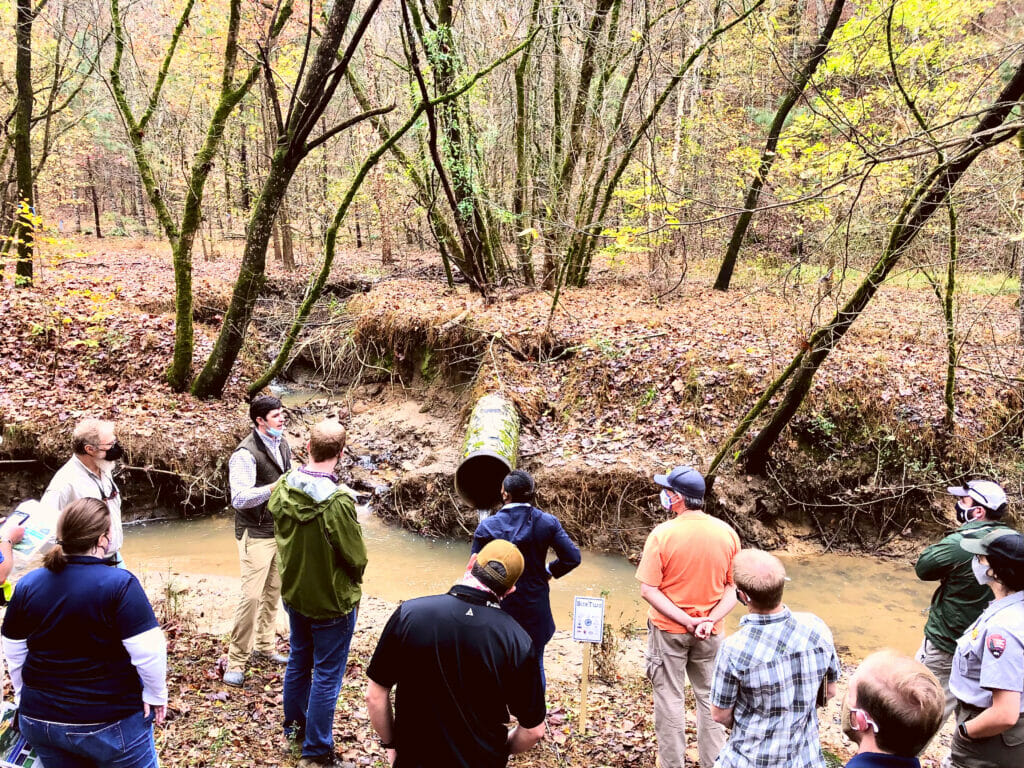
Flows in the Chattahoochee River from Buford Dam, which forms Lake Lanier, create unique problems in the river’s tributaries.
“During releases from Buford Dam, water rises rapidly into tributaries, forming a tide-like hydrograph,” said Connor Reynolds, former president of the Upper Chattahoochee Chapter. “As that happens, the banks of the tributaries become saturated and large chunks of soil begin to erode into the river system over time.”
As a starting point, the project team, with help from partners, selected a small unnamed tributary to the ‘Hooch near the community of Sugar Hill. The tributary is a few miles below the dam and is located within the Chattahoochee River National Recreation Area, a 48-mile long National Park Service unit.
Preliminary surveys found that the creek was home to the unique native Chattahoochee crayfish, a finding that sparked an idea to get the stream officially named. Volunteers successfully lobbied the U.S. Geological Survey to name the tributary Crayfish Creek, which they hoped would build excitement and interest in the effort.
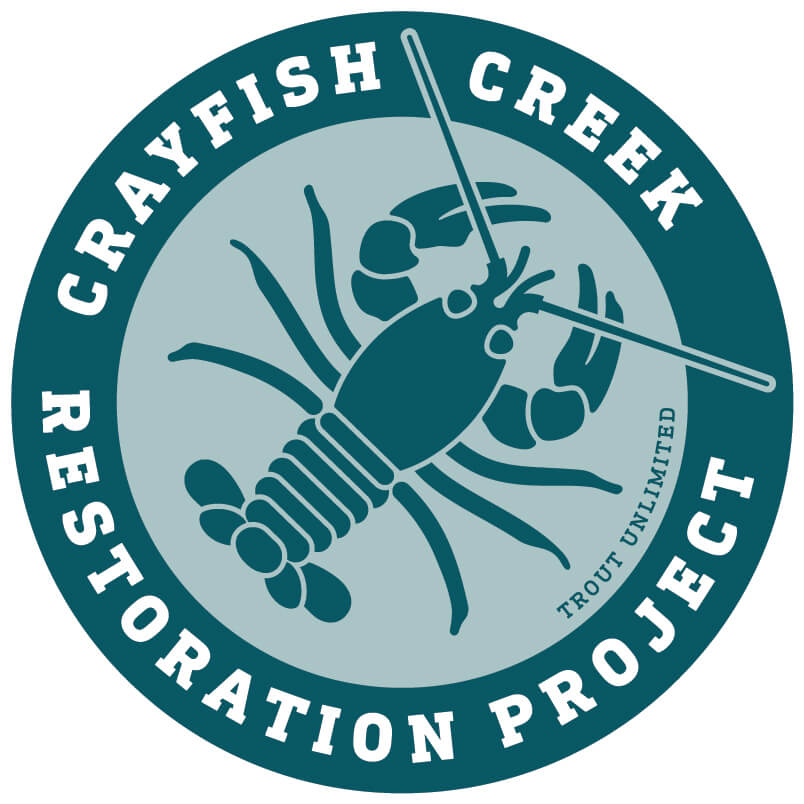
The project leaders knew this was an opportunity to engage the next generation of conservationist and partnered with the University of Georgia 5 Rivers Club from the start. UGA Professor and 5 Rivers Club advisor, Dr. Jay Shelton, became a key mentor for the project.
“The 5 Rivers program represents the future of TU and conservation, so it’s critical that these members are involved in projects like this and begin building those skills,” Shelton said.
In addition, the team hired Emily Rogers, an undergraduate in the UGA College of Environmental Design and 5 Rivers Club leader, to help facilitate the permitting process and develop initial design plans.
“Emily’s efforts allowed us to quickly clear some major hurdles and build momentum, while at the same time providing her with a unique professional development opportunity. This really was a win-win for everyone”, Shelton said.
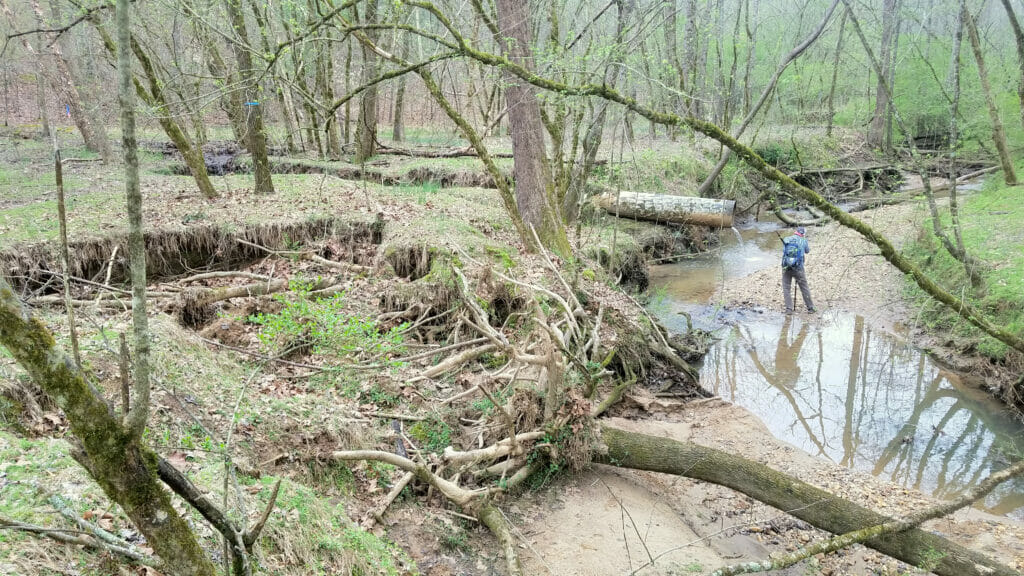
To address the erosion and sedimentation issues, project leaders worked with an interdisciplinary team to create an ecological restoration plan covering 500 linear feet on both sides of the creek. Three obsolete culverts were also removed to increase aquatic connectivity, and volunteers spent several days removing invasive plant species from the banks and replacing the invasives with native flora.
Fundraising became a Georgia-wide effort as well. Entering the Embrace-A-Stream Challenge, the team worked with the Georgia Council and all twelve state chapters to raise $23,000. The project team leveraged the initial funding and were awarded a grant from the National Fish and Wildlife Foundation and Georgia Power.
Not to stop there, the team worked with the local Gwinnett County Soil and Water Conservation District to secure additional funding through a USDA Natural Resources Conservation Service grant. Finally, when the contractor estimate came back higher than expected, the Georgia chapters answered the call one more time, filling the gap in a matter of weeks.
“TU’s staff use those types of grants for larger projects, but chapters don’t often feel as though they are capable of putting together successful applications,” said Jeff Wright, TU’s Southeast Project Coordinator. “Finding and tapping into local volunteer and professional resources was key to overcoming some of the potential barriers and make this remarkable project happen.”
While on-the-ground work started in the fall of 2021, preparation was underway well in advance. That included permitting and pre-project monitoring of water quality and life in the creek itself — which turned up not only the robust crayfish population, but also young-of-the-year wild brown trout.
In addition to financial support, volunteers contributed valuable labor. That included multiple workdays spent installing silt fence and coir matting on the regraded stream banks. “Over the past two-years we’ve held 11 workdays with over 300 volunteers coming out to support this project. This translated into a cost savings of over $100,000,” said Danny Jackson, President of the Oconee River Chapter.
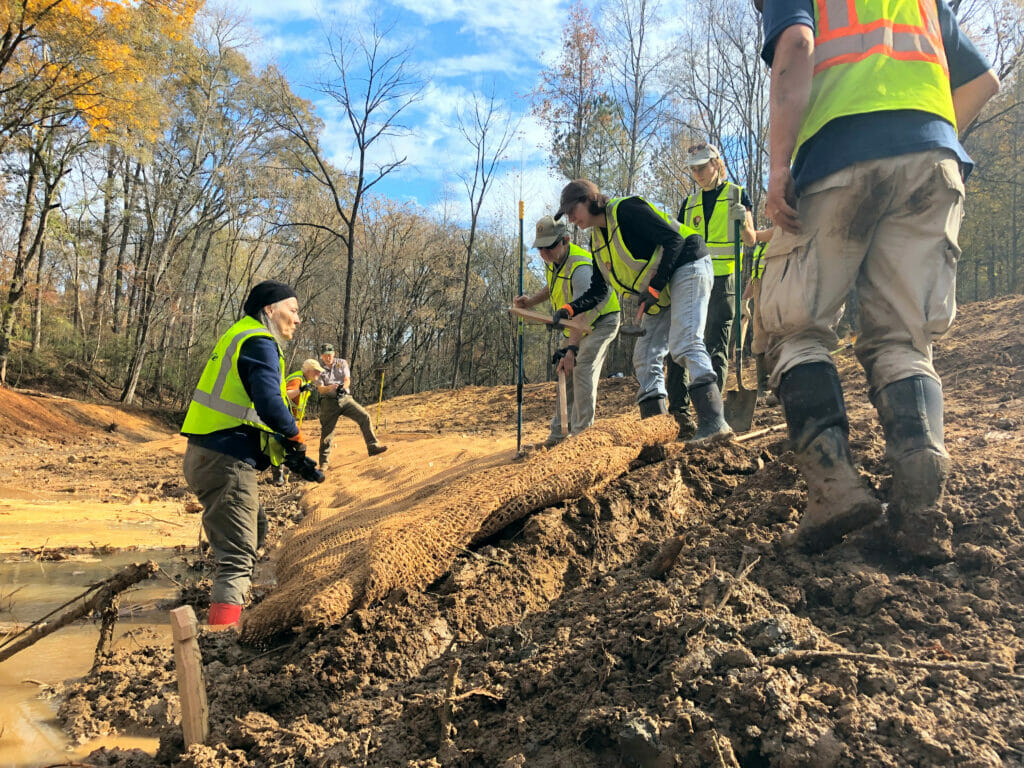
Leaders of the Pisgah and Rocky River chapters in North Carolina, who had worked on major projects recently, helped provide technical guidance and suggestions, representing a cross-state TU collaboration.
“We really split the duties,” Reynolds said. “It wasn’t just one chapter doing all the work.”
Collaboration has been a key component of the entire project. In addition to connecting with the local TU chapters, the team knew they would need outside support to be successful, and set out early on to get buy-in from local non-profits, and government agencies. To date, the official project partners include 17 organizations, including the NPS, GA DNR, US Forest Service, and a local engineering firm (Columbia Engineering) to name a few.
“It’s been incredible to see the amount of support we’ve received. We communicated our vision and people just responded. Whether it was volunteers showing up for workdays no matter the conditions, or local businesses and agencies offering in-kind support, it has been tremendous,” Jackson said.
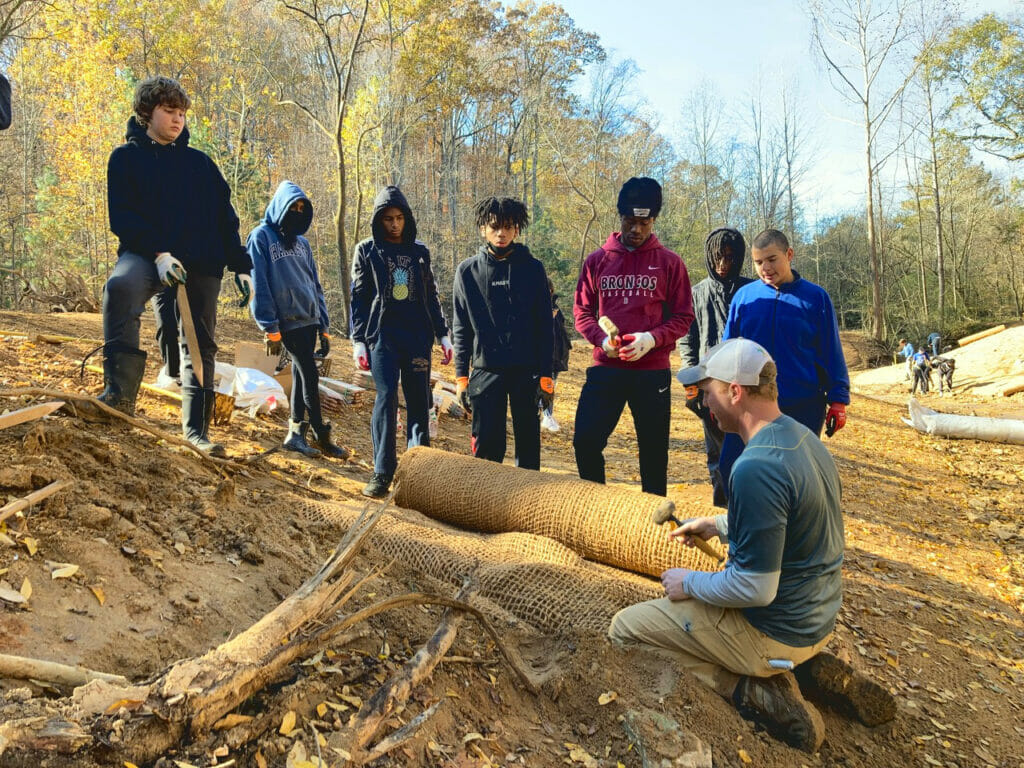
And then they want to keep going.
“Now that we’ve demonstrated that we can do a project like this, and we understand the costs and permitting, we hope this project can serve as a model that our team and others can use to restore other tributaries that contribute to the overall health of the great Chattahoochee,” Reynolds said. “There are hundreds of these tributaries that need work.” The collective vision of the project team is to restore as many Chattahoochee River tributaries as possible, one tributary at a time.
For more information on the Crayfish Creek project, including upcoming volunteer opportunities, visit https://crayfishcreek.org/.



